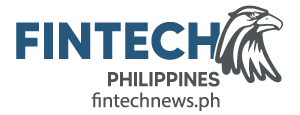
Insights Into Wealth Distribution and Financial Literacy in the Philippines
by Urs Bolt, WealthTech Expert, Philippines March 11, 2024Understand how the socio-demographics, growth resilience, and evolving financial literacy in the Philippines are shaping its diverse and resilient economic landscape.
A research article titled “The Financial Life of Filipinos: Insights into Wealth Distribution and Financial Literacy in the Philippines” provides a comprehensive analysis of the financial landscape in the Philippines, focusing on wealth distribution, financial literacy, and the path towards inclusive financial services. This summary highlights the key findings, discusses the state of financial literacy, and outlines recommendations for creating a more inclusive financial environment in the country.
Key Findings
The article reveals a complex picture of wealth distribution in the Philippines, characterized by significant disparities. Despite the country’s optimistic economic outlook and sustained growth, largely supported by remittances from overseas Filipino workers, a substantial portion of the population, approximately 25 million Filipinos, lives below the poverty line. This situation is exacerbated by limited access to financial literacy and education, particularly among those struggling to meet basic needs. The research underscores the importance of addressing these disparities to foster a more equitable financial landscape.
Financial Literacy in the Philippines
Financial literacy in the Philippines faces several challenges, including cultural barriers and a lack of accessible educational resources. The article points out that discussing financial matters is not common in Filipino families, with a prevailing expectation for children to support their aging parents financially. This mindset, coupled with a reliance on government pensions, underscores the need for a shift towards greater financial independence and literacy. The rise of finance influencers (finfluencers) and the increased interest in digital financial services, especially among the younger generation, indicate a growing awareness and demand for financial education.
Way Forward to Create Inclusive Financial Services in the Philippines
To address the challenges identified, the article proposes several strategies aimed at creating a more inclusive financial environment in the Philippines:
1. Empowering Filipinos through Financial Literacy Programs: There’s a critical need for comprehensive financial literacy programs that are accessible to all, especially those below the poverty line. These programs should focus on basic financial concepts, saving, budgeting, and investing, tailored to the unique needs of different demographics.
2. Harnessing Digital Financial Services: The Bangko Sentral ng Pilipinas (BSP) has outlined a Digital Payments Transformation Roadmap, aiming to shift 50% of total retail transactions to electronic channels. This initiative, along with the promotion of high-interest digital banks and reduced transaction fees, can play a significant role in enhancing financial inclusion.
3. Collaborative Efforts for Equitable Financial Access: The government, financial institutions, and other stakeholders must collaborate to implement strategies that address the root causes of financial exclusion. This includes investing in both human and physical capital to boost long-term development and leveraging technology to provide more accessible financial services.

4. Cultural Shift in Financial Attitudes: Changing deeply rooted cultural expectations regarding financial support and retirement planning is essential. This requires a concerted effort to promote financial independence and literacy from an early age, encouraging a more proactive approach to personal finance management.
In conclusion, the research article provides valuable insights into the financial life of Filipinos, highlighting the challenges and opportunities in wealth distribution and financial literacy. By addressing these issues through targeted educational programs, digital innovation, and collaborative efforts, the Philippines can move towards a more inclusive and equitable financial future.
Featured image credit: Pexels








